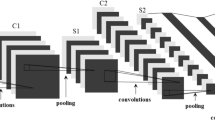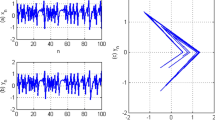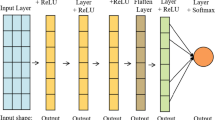Abstract
Interleaving plays an important role in many wireless communication systems, which is used to cope with burst errors and improve the reliability of data transmission. In this paper, we propose a new method to blindly estimate the parameters of convolutional interleaver in a non-cooperative context. The proposed method exploits both the property of interleaved stream and the deinterleaving technique. The product of the depth and width of the interleaver is firstly determined by analyzing interleaved data stream. Then the interleaved data stream is let to pass through a series of reconstructed deinterleavers. Thus the delay, the depth and width of the convolutional interleaver can be estimated by analyzing the deinterleaved data streams. Compared with other algorithms, the proposed method significantly reduces the searching scope and improves computational efficiency. Simulation results show that the algorithm has good performance even if errors exist.
Similar content being viewed by others
References
Proakis J. Digital Communications. New York: McGraw-Hill, 2000
Andrews K, Heegard C, Kozen D. A theory of interleavers. Cornell University Technical Report 97-1634. 1997
Burel G, Gautier R. Blind estimation of encoder interleaver characteristics in a non cooperative context. In: Hamza M H, ed. Proceedings of the IASTED. Scottsdale: ACTA Press, 2003. 275–280
Sicot G, Houcke S. Blind detection of interleaver parameters. In: Mercer B, ed. Proceeding of the ICASSP. Philadelphia: IEEE Press, 2005. 829–832
Sicot G, Houcke S, Barbier J. Blind detection of interleaver parameters. Signal Process, 2009, 89: 450–462
Lu L, Li K H, Guan Y L. Blind detection of interleaver parameters for non-Binary coded data streams. In: Proceedings of the ICC. Dresden: IEEE Press, 2009. 3668–3671
Lu L, Li K H, Guan Y L. Blind identification of convolutional interleaver parameters. In: Proceedings of the ICICS. Macau: IEEE Press, 2009. 754–758
Gan L, Liu Z H, Liao H S, et al. Blind estimation of the parameters of convolutional interleave (in Chinese). Acta Electron Sin, 2011, 39: 2173–2177
Ramsey J L. Realization of optimum interleavers. IEEE Trans Inform Theory, 1970, 16: 338–345
Forney G D. Burst-correcting codes for the classic bursty channel. IEEE Trans Commun Tech, 1971, 19: 772–781
Cluzeau M, Finiasz M. Recovering a code’s length and synchronization from a noisy intercepted bitstream. In: Proceedings of the ISIT. Seoul: IEEE Press, 2009. 2737–2741
Author information
Authors and Affiliations
Corresponding author
Rights and permissions
About this article
Cite this article
Gan, L., Li, D., Liu, Z. et al. A low complexity algorithm of blind estimation of convolutional interleaver parameters. Sci. China Inf. Sci. 56, 1–9 (2013). https://doi.org/10.1007/s11432-012-4673-9
Received:
Accepted:
Published:
Issue Date:
DOI: https://doi.org/10.1007/s11432-012-4673-9




